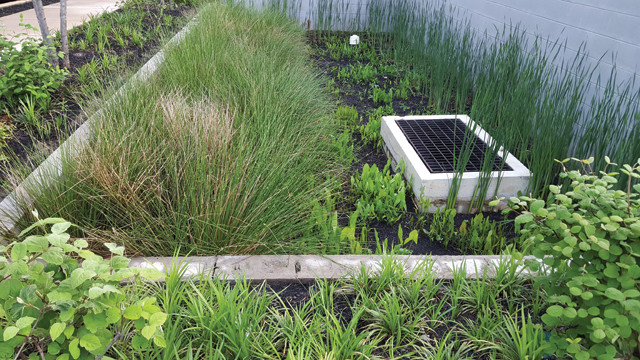
by Thea Boodhoo Tuesday, May 1, 2018
When environmental geologist David Wilcots joined Sci-Tek Consultants in 2014, he became involved with the Philadelphia Water Department’s Green Stormwater Infrastructure project. Sci-Tek’s goal was to redesign certain areas of the city’s urban landscape so that “less stormwater goes into the sewage system” and more goes into the ground, explains Wilcots. Doing so not only helps prevent flooding, but also lightens the load on sewage treatment plants. He manages a team of designers, data analysts and environmental scientists who are “gathering the stormwater flow data from around the city at hundreds of locations.”
The project often focuses on small strips of green — tree trenches, detention basins, bioswales or bump-outs, to name a few — in the midst of the concrete jungle. Tree trenches, for example, “are curbed strips of grass that hold trees,” he describes. “They may be along the side of a building or might separate the north and southbound lanes of a busy street, or they may be in large parking lots to provide areas where water can infiltrate. They’re sort of like elliptical islands of grass.” Bump-outs are similar but protrude from sidewalks.

A stormwater bioswale, like this one in Philadelphia, helps slow the flooding of paved areas by diverting water downward, away from the sewer system. Credit: courtesy of David Wilcots.
I was fascinated by this project because we’ve all seen, parked next to or even walked over these common features of city roadways, but we rarely, if ever, hear their names or think about what’s below them. And they’re useful for much more than shade and aesthetic value: “All these features are covered with grass, but below the grass is soil that is conducive to infiltration,” Wilcots says. Soils with a lot of sand are best at allowing water to filter down, “then below the sand will be a network of large rocks and, possibly, slotted piping that further promotes downward infiltration of stormwater.” The project is still ongoing, and cities across the United States are now implementing methods that Wilcots and others refined in the streets of Philadelphia. “This is going on around the country,” Wilcots says. “Philadelphia is on the leading edge of it.”
© 2008-2021. All rights reserved. Any copying, redistribution or retransmission of any of the contents of this service without the expressed written permission of the American Geosciences Institute is expressly prohibited. Click here for all copyright requests.